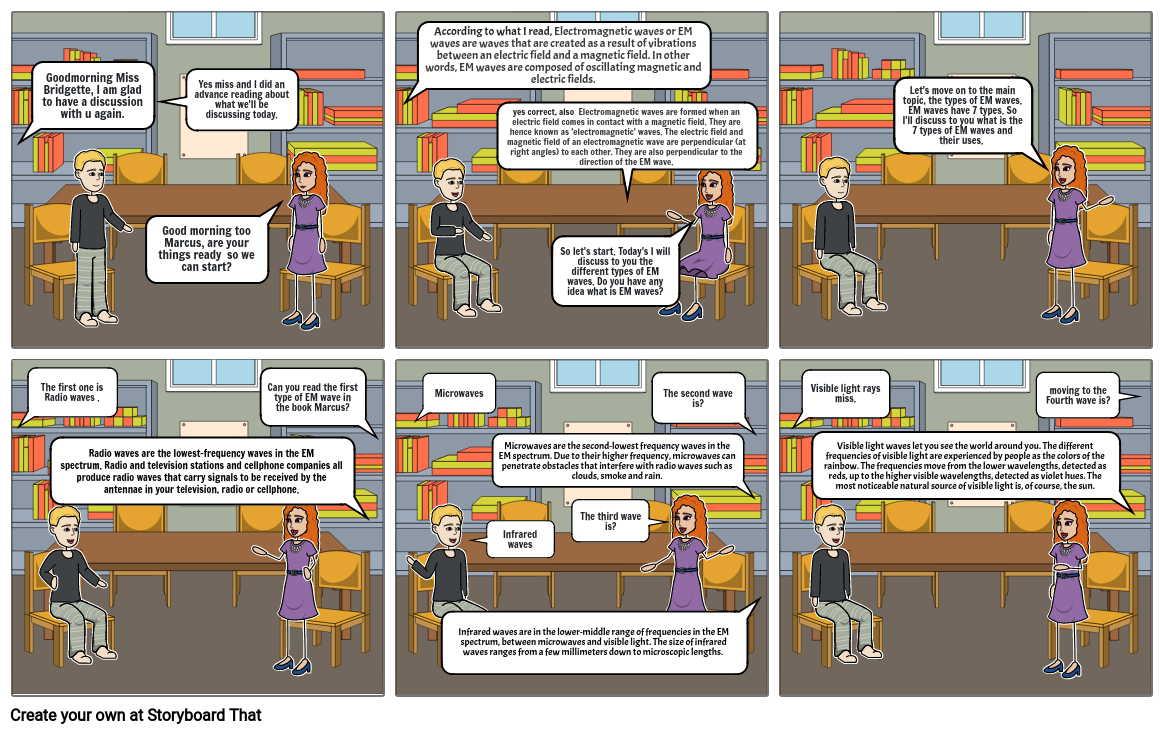Tutoring about EM waves

Storyboard Text
- Goodmorning Miss Bridgette, I am glad to have a discussion with u again.
- Good morning too Marcus, are your things ready so we can start?
- Yes miss and I did an advance reading about what we'll be discussing today.
- According to what I read, Electromagnetic waves or EM waves are waves that are created as a result of vibrations between an electric field and a magnetic field. In other words, EM waves are composed of oscillating magnetic and electric fields.
- yes correct, also Electromagnetic waves are formed when an electric field comes in contact with a magnetic field. They are hence known as ‘electromagnetic’ waves. The electric field and magnetic field of an electromagnetic wave are perpendicular (at right angles) to each other. They are also perpendicular to the direction of the EM wave.
- So let's start. Today's I will discuss to you the different types of EM waves. Do you have any idea what is EM waves?
- Let's move on to the main topic, the types of EM waves. EM waves have 7 types. So I'll discuss to you what is the 7 types of EM waves and their uses.
- The first one is Radio waves .
- Radio waves are the lowest-frequency waves in the EM spectrum. Radio and television stations and cellphone companies all produce radio waves that carry signals to be received by the antennae in your television, radio or cellphone.
- Can you read the first type of EM wave in the book Marcus?
- Microwaves
- Infrared waves are in the lower-middle range of frequencies in the EM spectrum, between microwaves and visible light. The size of infrared waves ranges from a few millimeters down to microscopic lengths.
- Infrared waves
- Microwaves are the second-lowest frequency waves in the EM spectrum. Due to their higher frequency, microwaves can penetrate obstacles that interfere with radio waves such as clouds, smoke and rain.
- The second wave is?
- The third wave is?
- Visible light rays miss.
- Visible light waves let you see the world around you. The different frequencies of visible light are experienced by people as the colors of the rainbow. The frequencies move from the lower wavelengths, detected as reds, up to the higher visible wavelengths, detected as violet hues. The most noticeable natural source of visible light is, of course, the sun.
- moving to the Fourth wave is?
Over 30 Million Storyboards Created

